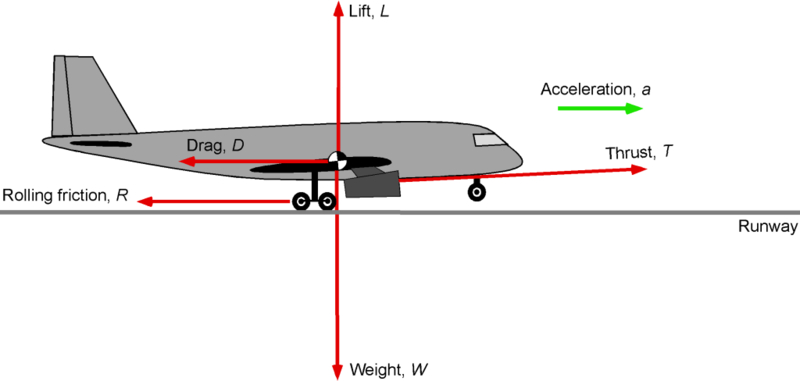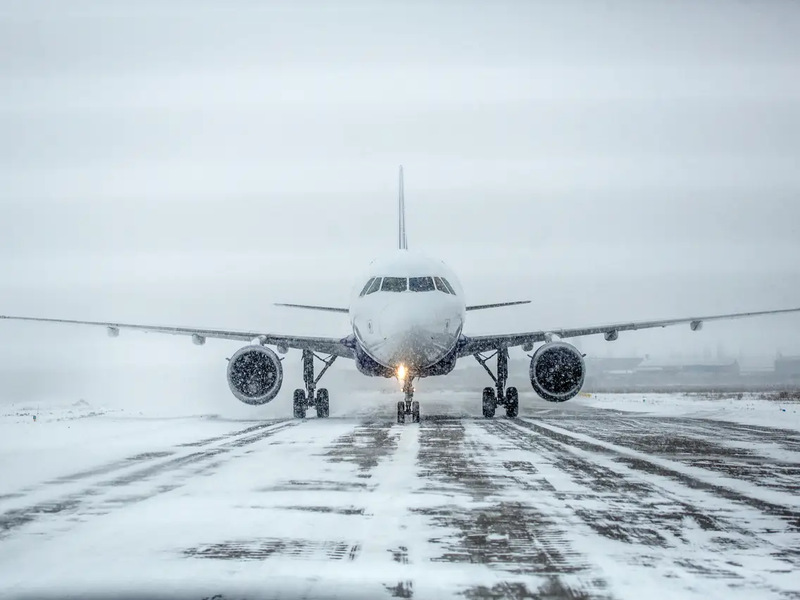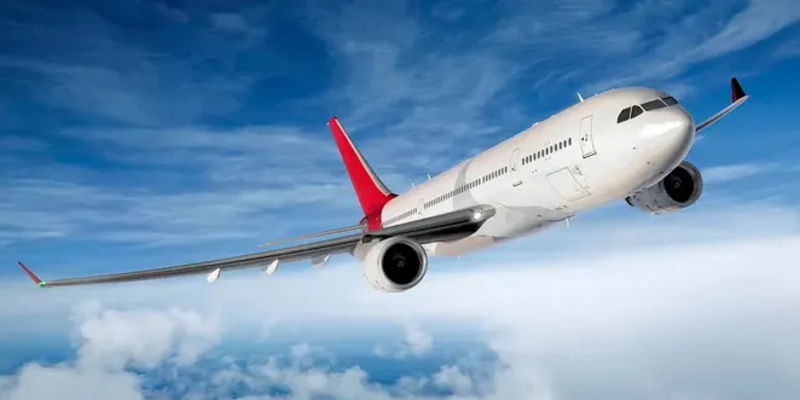When an airplane starts to leave the ground, it can be quite exciting. However, the feeling of the plane dipping right after departure is usually uncomfortable for many people. The sensation that occurs is frequently described as a sinking feeling. It should be noted that this experience during takeoff happens normally in flights and isn't typically indicative of any genuine risk or problem present on board. This article talks about why planes go down a bit after taking off, what causes the feeling of sinking, and its connection with airplane safety during ascent.
The Mechanics of Takeoff
When starting, the plane goes faster along the runway until it gets to the correct speed for lifting off. For a safe takeoff, the aircraft needs to reach a specific velocity known as 'takeoff speed' which changes according to the type of plane and present conditions. As it leaves the ground and starts climbing, the airplane keeps up at high speed. At the beginning, the climb is sharp. This means that the plane goes up fast in altitude. The steep ascent helps to reach enough height to clear nearby obstacles like buildings or land around the airport area.

When the airplane starts moving quickly, it creates enough lift to conquer gravity as it takes off. The first climb is very important to make sure the plane gets into a steady path of flight and adjusts with alterations in aerodynamic forces. This phase is managed by pilots so that the plane sticks to its best climbing speed and path, preparing for a comfortable changeover toward flying at cruising height.
- Lift-off Speed: The takeoff speed is calculated based on various factors including aircraft weight and weather conditions.
- Initial Climb: The steep climb angle is crucial for safety and obstacle clearance during takeoff.
Transition from High Speed to Climb
The engines of the aircraft are working with full power for quick gaining of height after taking off. This fast climb ensures that the plane reaches a safe altitude as soon as possible. Yet, while the plane goes up and its height increases, pilots lower the engine strength slowly. This decrease in thrust is needed for the shift from takeoff to smooth climbing. The alteration in engine power aids in managing the plane's climb rate with its fuel usage and motor functioning.
Lowering thrust after takeoff also aids in controlling the speed of the aircraft, so that it does not go beyond safe operational boundaries. Flight instruments and systems are used by pilots to watch over and modify climb performance, making sure there is a gentle changeover while still keeping comfort for travelers. This part is very important because it prepares the airplane for a steady and effective climb to its cruising height.
- Throttle Reduction: Engine power is gradually reduced to optimize fuel consumption and maintain a steady climb rate.
- Climb Performance: Pilots adjust climb parameters based on real-time data to ensure safety and efficiency.
The Feeling of a Dip
As the plane's engines lessen their strength, the speed of the aircraft also lowers. Occasionally, this change may give a feeling that the plane is falling or dipping. It happens due to adjustment in flight from a fast climb to a more moderate ascent. The change in power and pace might have a short-term impact on the airplane's climb angle, making it feel like there is a slight descent. Passengers may perceive this as a sinking sensation, but it is part of the normal climbing process.
This feeling is typically made stronger because of the psychological effect of plane movement, together with the absence of visual reference outside the plane. The sensation to dip might also be affected by aircraft pitch angle and changes in airspeed which are included in regular climb adjustments.
- Psychological Effect: The feeling of a dip is partly due to the psychological perception of the aircrafts movement.
- Pitch Angle: Changes in the plane's pitch can influence how the dip is felt by passengers.
Pilot Control and Safety Measures
Pilots are skilled in making these changes steady and guaranteeing a secure, pleasant ascent. They observe the speed, height, and engine functioning of the plane with care to make corrections when necessary. The dip or drop feeling is usually short and a planned part of stabilizing the plane at cruising height. Aircraft in the present time have advanced systems to handle these shifts and guarantee the protection of passengers.
Automated systems are employed by flight crews to manage the climb and reduce potential passenger discomfort. The design of the aircraft includes elements that assist in smoothing out these shifts so they are less perceptible to travelers. Pilots communicate with air traffic control during climbs, guaranteeing adherence to planned routes and providing guidance when required.
- Automated Systems: Modern aircraft use advanced systems to assist in managing the climb and reducing passenger discomfort.
- Communication: Pilots stay in contact with air traffic control to ensure a smooth and coordinated climb.
Impact of Aircraft Design and Weather
The sensations experienced can also be affected by the design of the aircraft. Different types of airplanes have different climb profiles and performance characteristics. The feeling of a dip can also be influenced by weather conditions like turbulence or wind. Pilots take into account these factors and modify their flying methods to lessen discomfort as well as keep safety intact.

The transition phase will vary for aircraft depending on their wing designs or engine configurations. Airplanes with bigger wingspans or distinct wing shapes might handle changes in thrust and climb angles differently. Weather conditions such as turbulence, and wind shear could affect how the climb of the plane is sensed by passengers, sometimes making it more noticeable at certain times.
- Wing Design: The design of the aircrafts wings can affect how the climb and dip are experienced.
- Weather Impact: Turbulence and wind can influence the sensation of dipping during the climb phase.
Reassurance and Passenger Comfort
Realizing this is a common sensation during flight can help to lessen worries. Safety methods in airplanes are carefully prepared for handling such instances and guaranteeing that the journey stays stable and protected. If you feel uneasy, bear in mind that it is typically brief and forms part of the usual operations of the aircraft.
The intensive training given to pilots and strict safety measures in place for modern aviation plays a big part in making sure passengers are comfortable. Airlines always check and enhance their methods so that travelers have the calmest climb possible. Being conscious of how these feelings relate to overall flight safety can assist passengers feel more relaxed during takeoff.
- Pilot Training: Pilots undergo extensive training to manage all aspects of flight, including the initial climb.
- Safety Reviews: Airlines regularly update safety protocols to enhance passenger comfort and flight experience.
Conclusion
To conclude, the 'drop' or dip that happens once you begin to fly is an expected part of an airplane's switch from fast climb to steady ascent. This sensation results from less engine force as the plane moves into a controlled climb. Pilots learn how to handle this change in flight smoothly and normally it lasts only for a short time without causing any harm. Insight into these elements may aid in calming passengers and creating a more pleasant flight experience.







